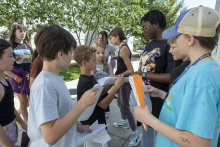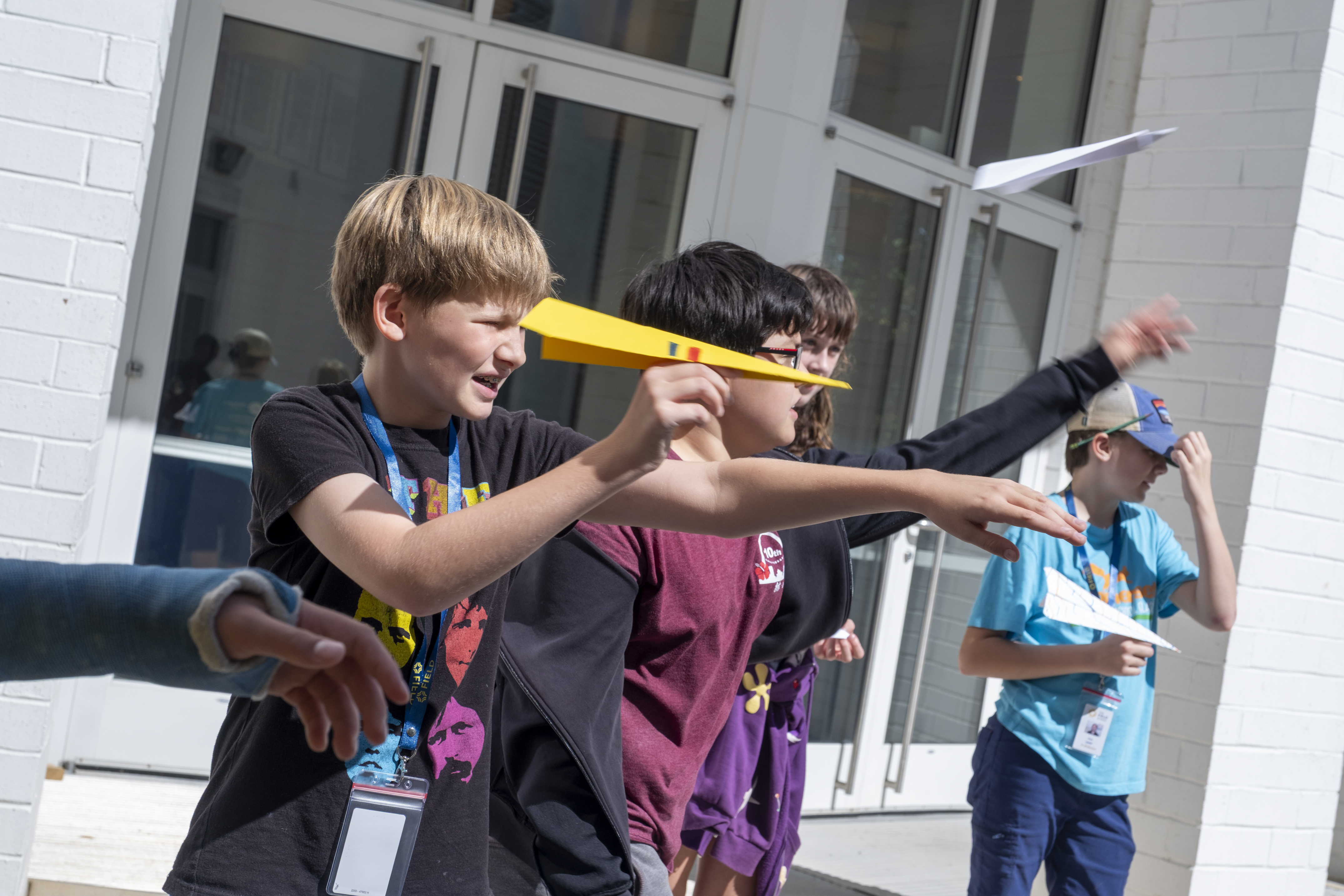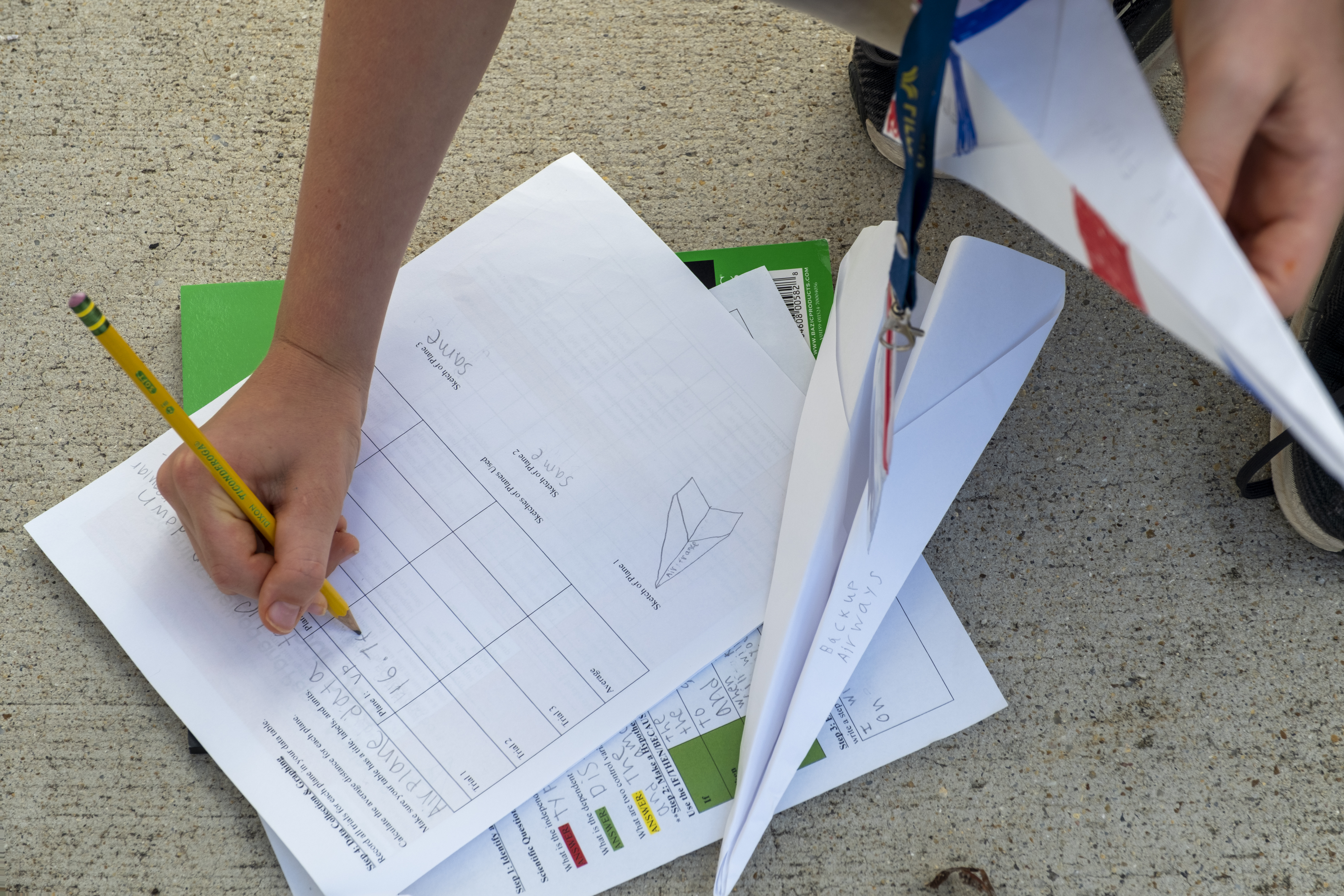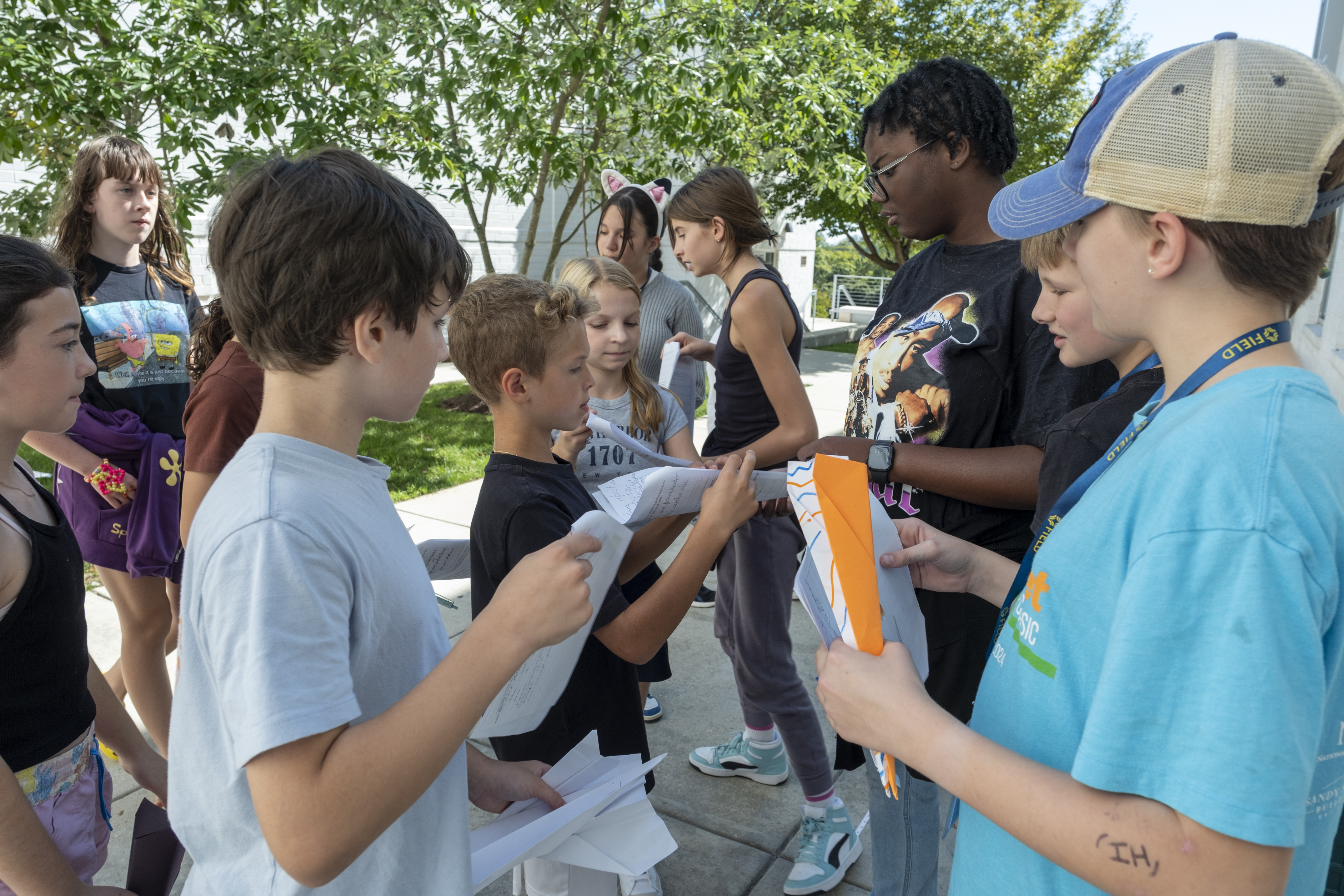

Sixth graders are discovering what it means to think and work like scientists, and their paper airplane project is helping them soar. As a fundamental project, “we’re getting students some familiarity with writing a lab report, practicing identifying variables while also doing something relatively fun,” explains science teacher Monte Woodard.
The paper airplane unit develops core scientific research skills: forming hypotheses, identifying independent and dependent variables, collecting accurate data, and writing formal lab reports. Each student begins by researching and selecting an independent variable to test. Students can add weight with paperclips, experiment with different folds, or create drag with objects that hang from the plane. The dependent variable remains constant: measuring flight distance.
On testing day, the whole class heads outside to launch their creations and carefully measure the results. Back in the classroom, students record their findings in data tables and look for patterns. Then the challenge deepens, students compare their results with classmates who tested different variables, building an early foundation in collaborative analysis.

The final step is writing a comprehensive lab report, helping students organize their thinking and communicate their findings effectively. For many, this marks their first real experience with scientific inquiry.
As the project concludes, Monte observes students beginning to think and act like scientists, displaying a high level of comprehension of scientific concepts and adopting scientific language. “They’re really starting to grasp the difference between the variables,” she says, “and use the language. I hear them say ‘Oh, this is step three of the scientific method' and things like that. I think it's really cool.”
